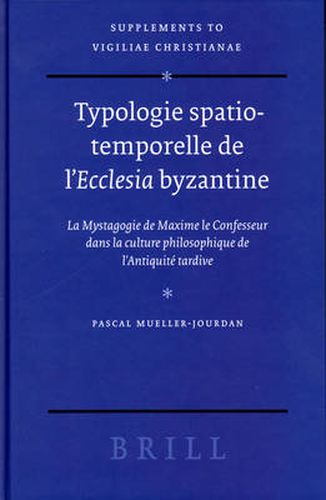Readings Newsletter
Become a Readings Member to make your shopping experience even easier.
Sign in or sign up for free!
You’re not far away from qualifying for FREE standard shipping within Australia
You’ve qualified for FREE standard shipping within Australia
The cart is loading…






This study adresses the philosophical context of the Mystagogy of Maximus the Confessor. It examines how the Byzantine monk integrates Neoplatonist topics when exposing one of the most important feature of his religious conception of the physical world or cosmology. The volume contains three chapters. The first one compares the purpose of the Mystagogy and the program of the philosophical training in late Antiquity. The second consists of two parts: (1) study of the use of the Aristotelian categories of ‘when’ and ‘where’ in the ‘Ambiguum 10’ of Maximus in order to analyse the status of ecclesiastical architecture and the nature of the liturgical ‘synaxis’ of the church (chapter 3); (2) study of the development of the categories of space and time in the works of the Neoplatonist Greek commentators of Plato and Aristotle such as Jamblichus, Proclus, Simplicius and Damascius. The third chapter offers the first extended examination of the metaphysical status of the ‘ecclesia’ and its dynamic activity compared to the metaphysical status of space and time required for the explanation of the Neoplatonist physical world system. Henceforth, the ‘ecclesia’ of the Mystagogy can be considered as the type of the providential action of God. This book provides many important new perspectives for reading the works of Maximus the Confessor: especially the Mystagogy not only for theologians but also for scholars interested in the Byzantine philosophy of late Antiquity.
$9.00 standard shipping within Australia
FREE standard shipping within Australia for orders over $100.00
Express & International shipping calculated at checkout
This study adresses the philosophical context of the Mystagogy of Maximus the Confessor. It examines how the Byzantine monk integrates Neoplatonist topics when exposing one of the most important feature of his religious conception of the physical world or cosmology. The volume contains three chapters. The first one compares the purpose of the Mystagogy and the program of the philosophical training in late Antiquity. The second consists of two parts: (1) study of the use of the Aristotelian categories of ‘when’ and ‘where’ in the ‘Ambiguum 10’ of Maximus in order to analyse the status of ecclesiastical architecture and the nature of the liturgical ‘synaxis’ of the church (chapter 3); (2) study of the development of the categories of space and time in the works of the Neoplatonist Greek commentators of Plato and Aristotle such as Jamblichus, Proclus, Simplicius and Damascius. The third chapter offers the first extended examination of the metaphysical status of the ‘ecclesia’ and its dynamic activity compared to the metaphysical status of space and time required for the explanation of the Neoplatonist physical world system. Henceforth, the ‘ecclesia’ of the Mystagogy can be considered as the type of the providential action of God. This book provides many important new perspectives for reading the works of Maximus the Confessor: especially the Mystagogy not only for theologians but also for scholars interested in the Byzantine philosophy of late Antiquity.